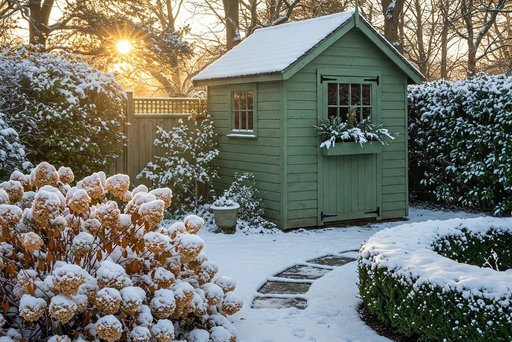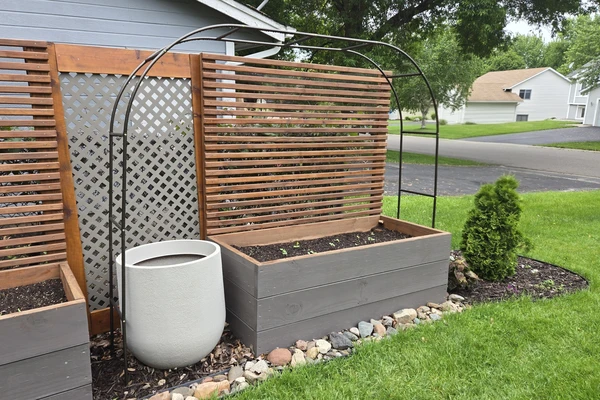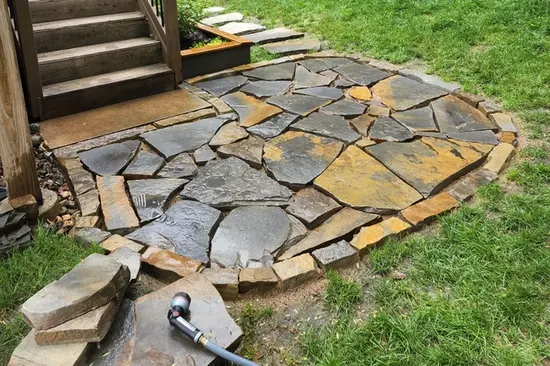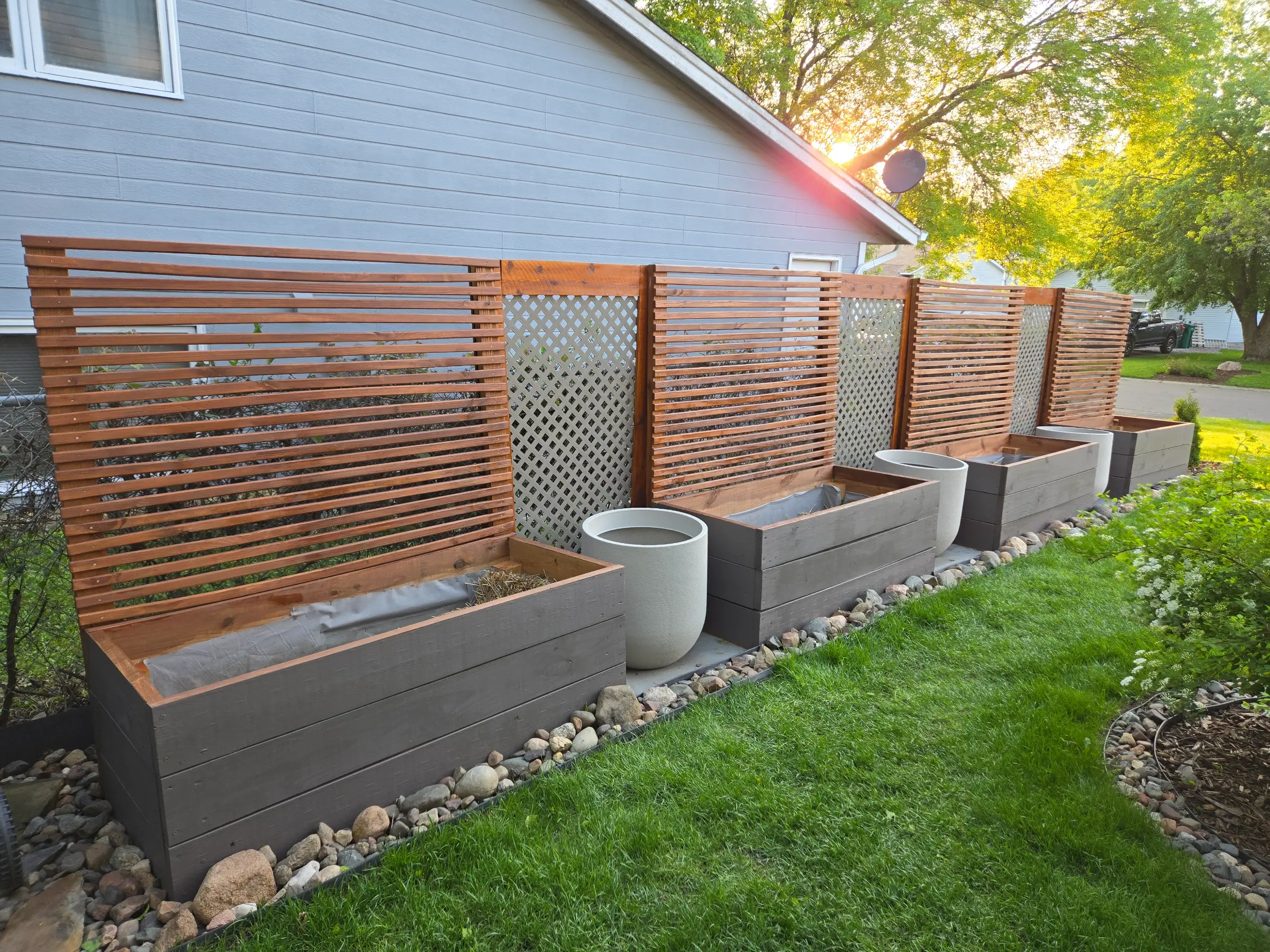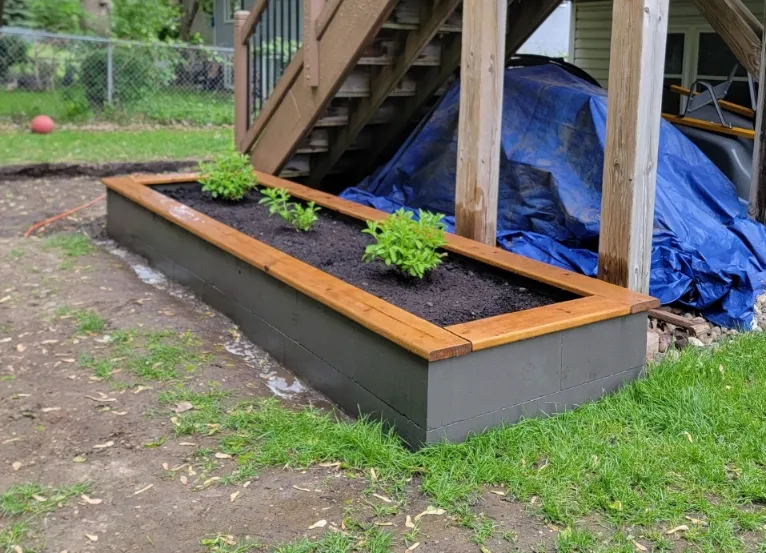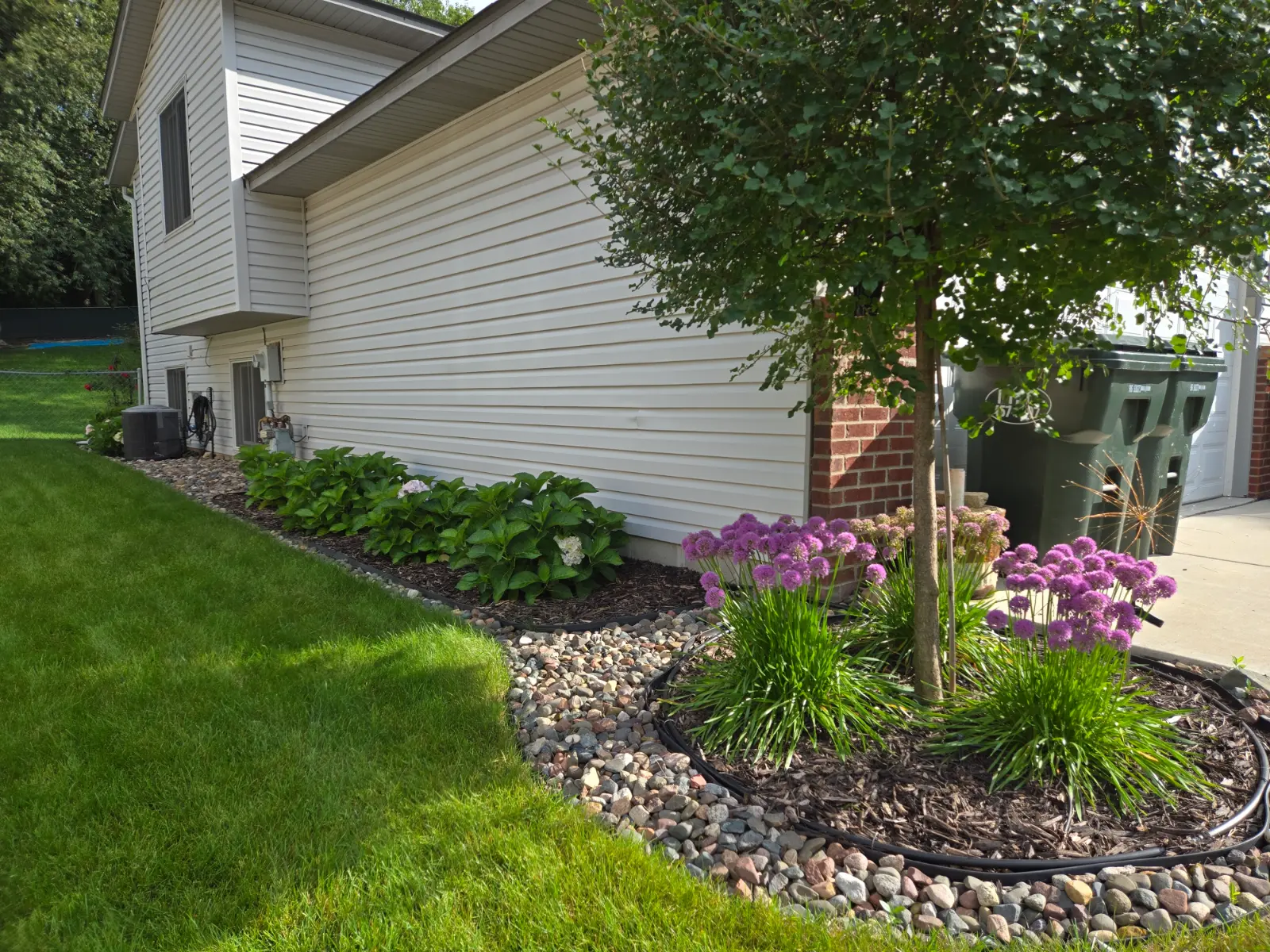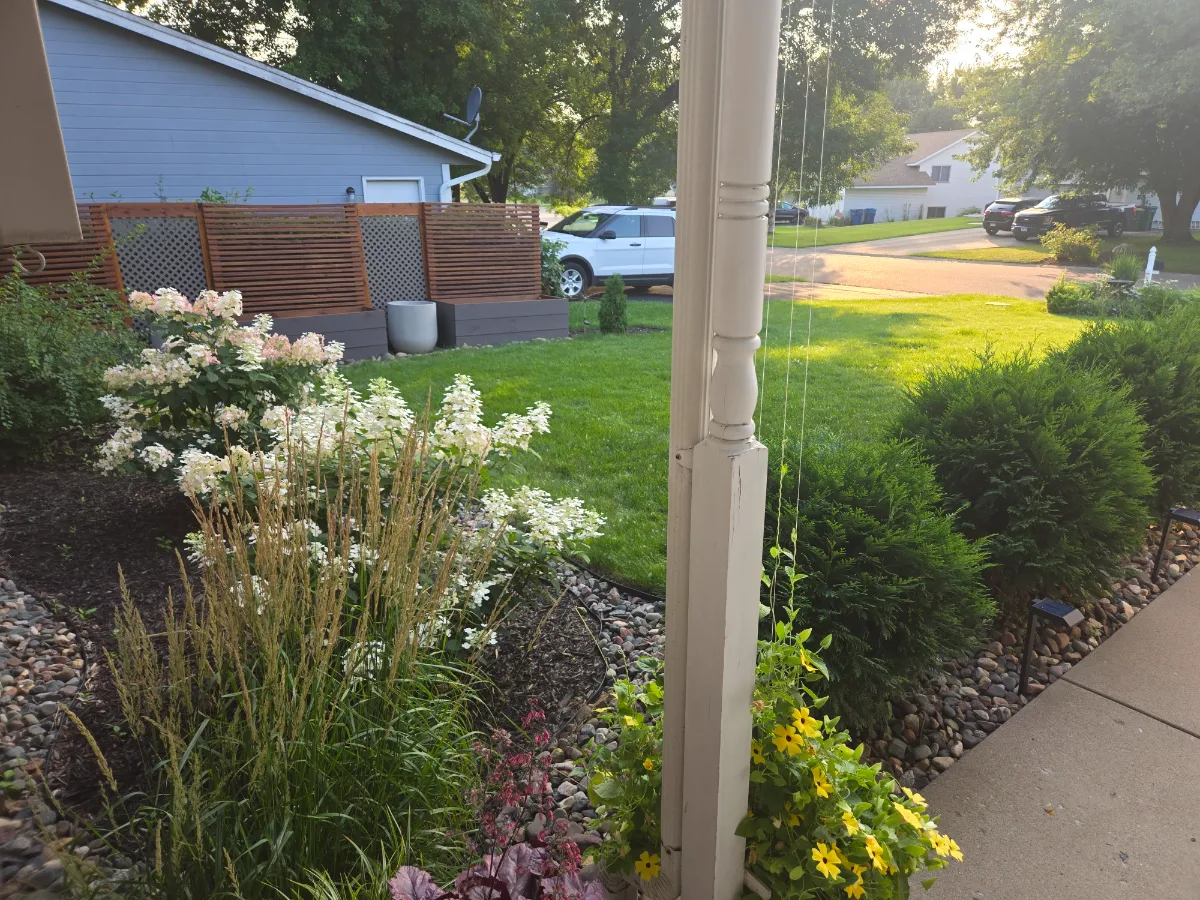I was inspired to write this article because it started to snow here in Minnesota today, and even though it’s already February, we haven’t received a lot of snow this season which has made it visually uninspiring outside.
After watching the snowflakes fall to the ground however, I thought it would be fun to write about some ways to bring winter interest into your landscape. This way, come Spring when you are starting to work on your own outdoor projects, perhaps you will keep some of these ideas in mind when picking out your plants.
Bringing Winter Interest to Your Landscape
There are other reasons to bring a unique arrangement of plants to your landscape besides just adding more character to a pretty bleak space once the snow has covered the ground. Although it is nice to bring more appeal to your gardens, it’s helpful to the wildlife and beneficial insects as well.
Why Winter Interest Matters
If you have these plants that can remain left alone come fall, and still look attractive in the landscape in the winter, you will be providing shelter for the wildlife in your area as well as giving a safe environment for the beneficial insects we want to keep. In turn they will lay their eggs in your gardens, which will aid in controlling the insect pests we don’t want because they eat the plants and bring diseases to your gardens..
So where to begin… There are several various plants, shrubs, and trees you can consider as they will all bring definition to your landscape whether it be their foliage, branches, or even just the general form of the plant.
The types I will share will be deciduous plants, perennials and of course evergreens or conifers.
Deciduous Plants: Adding Texture and Color
I know what you might be thinking. Why would I suggest something that will drop all of its leaves in the winter to be something to add to your landscape for interest?
Well, there are deciduous plants that not only look nice in the landscapes due to their foliage, but their branches as well. I’m talking about Red Twig Dogwoods.
Red Twig Dogwood:
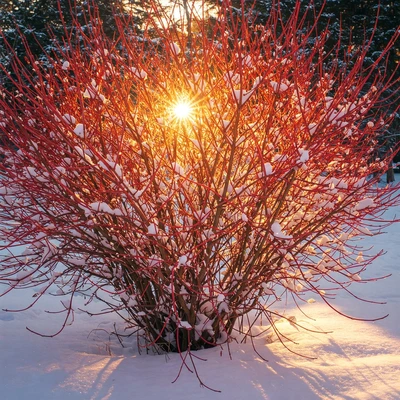
Although there are a variety of different dogwoods available today for you to choose from, I’m going to stick with sharing this in reference to Red Twig Dogwoods, which the bark will provide a nice red pop of color against the white snow in your yards. An excellent contrast to provide the much needed winter interest when everything can be so gray outside.
Hydrangea:
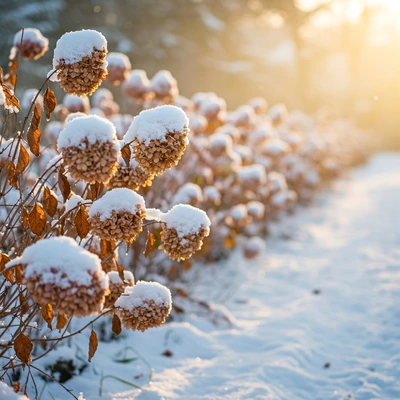
Yes, of course I will include my Hydrangeas on this list since I do have them in my own landscape and enjoy what they bring to my yard.
These deciduous shrubs or even tree forms do not provide any appeal in their branches like the previous dogwoods mentioned, however if you chose to leave your blooms intact, then they will provide a nice dried flower ball to create definition against the branches of the plant.
Winterberry:
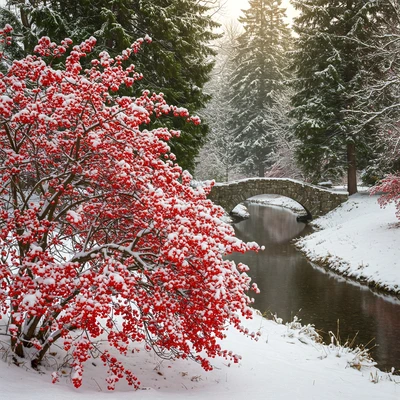
I think the name says it all, but an amazing looking deciduous shrub I would suggest adding into your landscape to bring winter interest would be the Winterberry.
This is such a lovely looking plant that not only brings that pop of color from the berries, but will serve an additional purpose in your landscape by providing food for the wildlife.
Unfortunately, according to ASPCA.org, the berries are considered toxic to dogs so I will likely keep this shrub out of my gardens. I try to be mindful of this when I choose my plants, and it’s not as common now that my dog is getting older to be scooping everything in his mouth to test, I’d like to keep his options limited. So please keep this in mind when you are choosing plants for your own landscapes.
Perennials: Nature’s Winter Sculptures
I like to bring perennials into this winter interest category because if you are a lazy gardener like I am, I tend to leave my perennials alone in the Fall and cut them back in the Spring.
There are also a couple reasons to leave your perennials in the Fall that have nothing to do with being lazy. 🙂
Why Leave Perennials Standing Through Winter?
One of those reasons is to provide homes to beneficial insects. Following the pollinating season they will end up finding a home in your garden to overwinter, whether that being they burrow into your plants stems or under the fallen foliage or soil surrounding your plant.
Another reason I choose not to cut back my perennials is to allow the foliage to provide the added warmth around the base of my plant so the cold winds of winter won’t damage the root system.
Here are a few different plants to consider in your own gardens that will provide you that additional winter interest.
Astilbes:
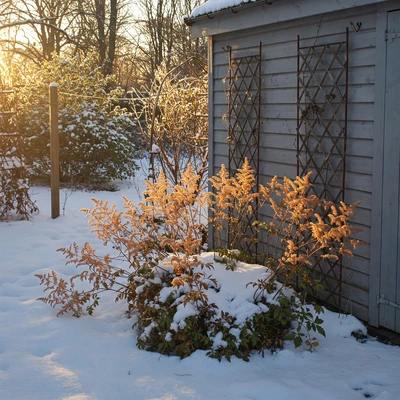
One of my most favorite perennials in my own garden are the Astilbes. I do not receive a ton of sun in my yard, so I’ve had to look for plants with low sun requirements, and this is one of them that I absolutely love. The flowers come in several colors and I love that they offer a fern like look with their foliage.
Once the blooms have dried up, the stems of the plants remain rather strong, so come winter the flowers of the Astilbe sort of look like feathers to me, sticking straight up from the snow. It could be a personal preference, but I like the appearance it provides in my winter landscape.
Alliums:
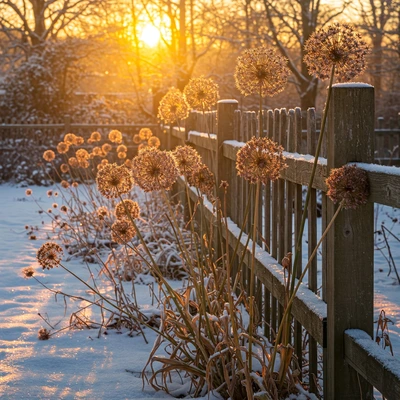
Another wonderful plant to consider adding to your landscape would be Alliums. I have them included on the side of my house around the base of my Lilac Tree because they provide a pop of color once the blooms of my Lilac have faded.
Alliums, much like the Astilbe, hold their blooms on tall sturdy stems as well, so come the winter season you will receive that added interest of these cute little ball-like blooms floating above the white winter snow. They remind me of a large dandelion when it reaches its final stage and turns into a puffball, when you pluck it from the ground and make your wish.
Echinacea (Coneflower):
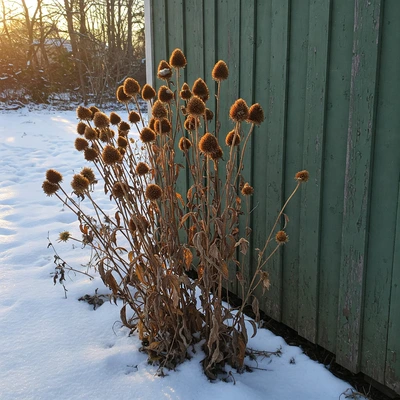
This native flower is a must have in your garden. If you are unfamiliar with the name, Echinacea, I started out knowing them as Coneflowers. By the look of the flower, it is very easy to remember Coneflower over Echinacea, so feel free to call it whatever since others will know what you are referring to.
Here is another plant I love having in my garden because it can grow to a decent height and appear over other perennials in your garden without being hidden. The bees and butterflies love this flower too, as I find them all over mine during the summer.
I like to leave these alone in the winter because they not only provide winter interest, but seeds for the birds.
Sedums:
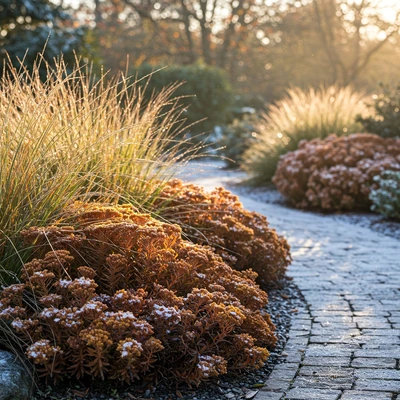
I’ve included Sedum, known as the Autumn Joy Sedum, in my pollinator garden. I might have planted too many in this small garden in my front yard, but this perennial is so pretty throughout the season I couldn’t help myself but plant several of them.
Sedum plants provide a unique form in my winter landscape because they stand out from my other perennials by their shape alone. They remind me of broccoli heads with a pop of color. Although the color has faded since Fall, they still give you the winter interest by their mounding shape and definition in the flowers.
Ornamental Grass:
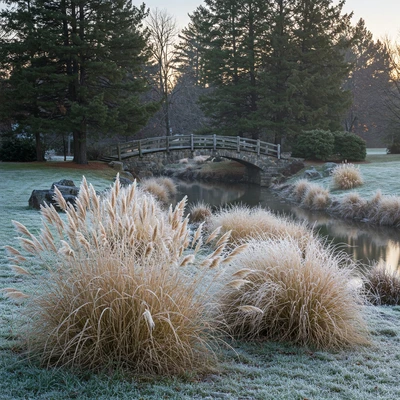
A top choice for me when landscaping, is including ornamental grass. There are so many types of grasses you can include in your own landscape, and I’m sure many of them will bring winter interest. I like the look of the tall varieties that will sway in the wind and form a nice tall upright form against the snow.
Evergreens & Conifers: Year-Round Beauty
Of course before I end my post, I will need to include both Evergreens and Conifers on my list of trees and shrubs that will bring you winter interest into your landscape. Each of these are going to be my number one choice, and there are so many options to choose from, all of which are dependent on their size and space you have available to grow them.
I don’t have a very large yard, so it would look quite odd if I were to add something like an Eastern White Pine tree, which does make me slightly sad since this is one of my absolute favorite Conifers. They give a soft appearance that stands out amongst the other trees, with their long blue green needles. I will just have to continue to enjoy them when hiking through our nearby trails.
Arborvitae:
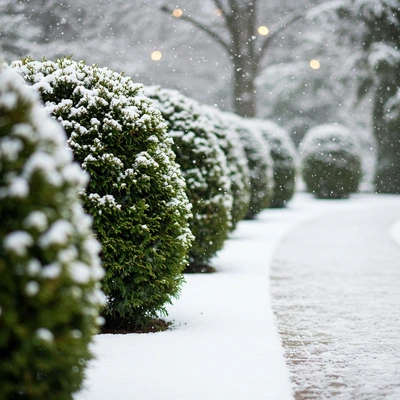
You will find that I have a couple varieties of Arborvitae in my personal landscape, and these types were chosen due to their mature size remaining smaller than most Evergreens. I was looking for something to plant along our walkway that wouldn’t get much bigger than 2-3 feet around, so I decided on the Technito Globe Arborvitae.
This shrub looks so nice in the winter, and provides lush dark green foliage all year round. I also enjoy how the snow layers on the leaves and branches, and looks so beautiful in the landscape during winter.
Boxwood:
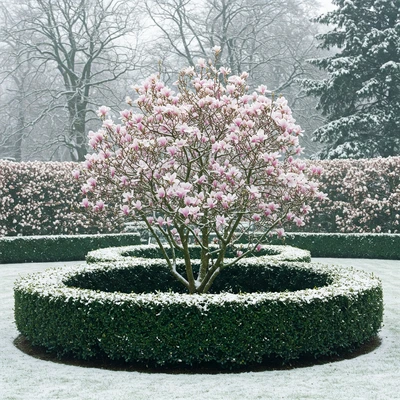
Before I chose the Arborvitae, mentioned previously, in my landscape, I had considered going with a Boxwoods because they had smaller varieties to choose from and seem to keep their tight compact form as well as look nice when trimmed, and provide a clean appearance to the landscape.
I chose against Boxwoods because I was new to gardening with a new puppy at the time, so I was focusing mostly on pet friendly shrubs, and these are considered toxic if ingested as well as a skin irritant from the sap. Although if I were selecting plants to add to my landscape today, I don’t think this would deter me because I know now that my dog wouldn’t be eating the leaves, and I could simply wear gloves when having to prune the shrub.
Spruce:
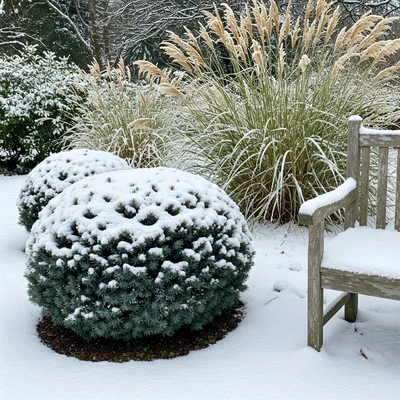
There are so many Evergreen and Conifer varieties that can add winter interest, but I will end this by listing the Dwarf Globe Blue Spruce because I just love the color that this shrub can provide in the landscape with its blue needle leaves and mounded shape.
It’s nice to include a variation of colors in the landscape that will balance nicely against the greens and yellows, allowing everything to pop against each other and stand out. I like to bring this added interest into the landscape for foliage and color alone, since we can’t always have something flowering in our gardens.
Of course this will add wonderful winter interest as well with the way it collects the snow on the needles and a touch of blue color against the other green Conifers or Evergreens.
Non-Plant Options: Adding Structure to Your Winter Garden
Alternatively if you wanted to add anything else into your landscape that does not fall under the plant category could be things like:
- Sculptures
- Trellises or Arches
- Arbors
- Fountains
- Benches
- Rocks/Boulders
Planning Ahead for Year-Round Garden Beauty
The list could go on, but I hope what I have provided above gave you some inspiration for your next landscaping project, and allow you to think ahead on what types of plants, shrubs or even trees you might want to think about adding into your garden to bring that added interest to your landscape when everything else has been spent until the following season.

